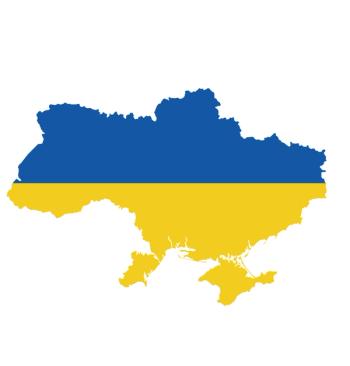
“Bound Upon a Wheel of Fire”: Reflections on Trauma
Trauma is the distance between the reach and the grasp for our chosen image.
SECOND THOUGHTS
This column approaches trauma from 3 perspectives: child and family psychiatry, trauma-informed care, and social psychiatry and philosophy. The tragedy of King Lear is briefly introduced as the framework for understanding tragedy and trauma. In closing, I argue for a nuanced approach to trauma that is selective but responsive to the ruptures that create trauma and tragedy in our lives.
You do me wrong to take me out o’ the grave.
Thou art a soul in bliss; but I am bound
Upon a wheel of fire, that mine own tears
Do scald like molten lead.
– King Lear, Act IV, sc 7
In this week’s column, I would like to offer 3 perspectives on trauma from a lifelong involvement in trauma studies. My research for the Diploma in Psychiatry at McGill University investigated the traumatic impact of the Holocaust on third generation survivors in Montreal.1 Later, I trained in the Harvard Program in Refugee Trauma and taught there.2 This deep engagement led me to investigate trauma philosophically based on the insight that both trauma (where things shut down) and event (where new possibilities arise) are predicated on the rupture of a lifeworld.3,4
I will organize my reflections by taking a key word from King Lear’s famous plaint in each domain. Lear is complaining to those “in bliss” (meaning “in heaven” in his times and “at peace” in our own), that he has been dragged out of his misery to face not only the predicament that binds him to a living hell but that his own reactions—his grief over the loss of his daughters and his kingdom expressed in his tears—are scalding him. If we know how to read Shakespeare with a modern sensibility, we may find that he not only describes the human condition but is precisely the one who has given us access to registers of affect and sensibility that define what it means to be human, as Harold Bloom argued.5 As the Polish Shakespeare scholar Jan Kott put it, Shakespeare is our contemporary.6
Child and Family Psychiatry7
Children and families are bound to their predicaments the way snails are bound to their shells. “Wherever you go, you take it with you”—good and bad. Sometimes, it may feel that they are bound by chains and shackles which may be literally true as well. Sometimes those chains are the vehicle for the intergenerational transmission of trauma.1 Our goal should be to unshackle children and families from their chains arising from their predicaments to open new horizons and options for safety, healing, and growth.7 We can sum this up very simply for clinical work by stating that, “You have to get into it to get out of it.”
Trauma-Informed Care1,2,4,8
The intensity of trauma sears experience into bodies and minds the way firedoes to flesh. Our goal, like treating physical burns, is to remove the offending traumatogen (whether a caustic agent or an experience), deal with its first noxious impact, and protect the victims from secondary and tertiary consequences. There appears to be a consensus that the “body keeps the score” as Harvard’s Bessel van der Kolk sums it up.9 Can we change the score card? Richard Mollica, Director of the Harvard Program in Refugee Trauma, believes we can through an empathic witnessing of “the trauma story”—a story which must be told to another person.10 Creating the conditions for listening to the trauma story is at the heart “trauma-informed care,” which involves creating a healing environment for trauma victims along with self-care for the healers.
Social Psychiatry and Philosophy3,4,11
Trauma places its victims on a kind of wheel which describes the predicament in which they find themselves that may repeat in reality through renewed exposures to traumatogens (traumatic agents or experiences) or repeated through mental re-experiencing. Trauma is also on the larger wheel of social context—as documented by studies on the social determinants of health (SDH)12 and adverse childhood experiences (ACE).13 Once individuals are bound on these wheels, secondary prevention in the shape of therapy and security to mitigate suffering may be our best offer, but for populations, we can and must aim at primary prevention to diminish and where possible eliminate adversity, which has been brilliantly outlined by Sir Michael Marmot’s work on SDH. The slogan for this work is “fair society, healthy lives,”14 one which the Global Mental Health movement and social psychiatry should adopt.
Finally, as a social psychiatrist and social philosopher, a plea for careful, deliberate reflection on the nature of trauma.15,16 Just as every death is not a tragedy, not all the vicissitudes of life are traumas. If trauma is everywhere,17 it is nowhere. If everyone is traumatized, it loses its salience. We need a nuanced vocabulary for human suffering and to accept realistically that there are extreme states and harrowing situations. Or? Or we must invent new terms for ever more horrific, ever more traumatizing situations. Once American psychiatry coined the term posttraumatic stress disorders (PTSD) to name a set of exceptional circumstances arising from war and related extreme situations, the “bracket creep” sadly typical of our field soon started to include every kind of hurt and disappointment in that diagnosis. Result? Complex PTSD had to be invoked3,4,8 for more severe cases.
Not every old man facing death and despair is a tragic figure. The aging King Lear was tragic because his own foolishness—Aristotle’s classical invocation of hamartia, the “tragic flaw”—brought him to lose the love of his daughters and the unity of his kingdom. Does that mean that only the wealthy and the powerful experience tragedy and trauma? No. As American playwright Arthur Miller wrote in a celebrated essay, tragedy in our times is the distance between the reach and the grasp of the “common man” for a cherished image.18 Tragedy, Miller asserted—and trauma, I would add—“derives from the underlying fear of being displaced, the disaster inherent in being torn away from our chosen image of what and who we are in this world.” Insofar as we want to attach words like tragedy and trauma to social and psychological aspects of our existence and not merely to the brute facts of tissue damage and bodily wounds, we need a selective definition of trauma that is at the same time plastic and responsive to the many kinds of human predicaments in which displacement, disaster, and alienation rend ruptures in our lives and become unbearable wounds.
Acknowledgements
I wish to dedicate this column to Raymond Reed, MA (1937-2022), my high school English teacher and lifelong friend who challenged me to reach beyond the confines of that world to attend McGill University. He inspired my love of the English language, notably through Shakespeare and Milton, and remains a model for what it means to be a Christian and a humanist. A Spanish version of this column recently appeared in the Boletín CRISOL in Mexico City and appears with the permission of the editor, Javier Vicencio, MD.19
Resources
Here is an excellent program with a compassionate and comprehensive approach to trauma:
- Harvard Program in Refugee Trauma.
https://hprt-cambridge.org/ - HPRT Director, Richard Mollica, Healing Invisible Wounds10
For an enlarged view of our work through Shakespeare:
- Samuel Gilchrist Hall, Shakespeare: Folly, Humanism & Critical Theory. Philosophy Now. April-May 2024.
https://philosophynow.org/issues/161/Shakespeare_Folly_Humanism_and_Critical_Theory
These are some critical perspectives on the current cultural obsession with trauma:
- Didier Fassin and Richard Rechtman, The Empire of Trauma15
- Will Self, “A posthumous shock: how everything became trauma”16
Dr Di Nicola is a child psychiatrist, family psychotherapist and philosopher in Montreal, Quebec, Canada, where he is Professor of Psychiatry & Addiction Medicine at the University of Montreal and President of the World Association of Social Psychiatry (WASP). He has been recognized with numerous national and international awards, honorary professorships and fellowships, and was recently elected a Fellow of the Canadian Academy of Health Sciences and given the Distinguished Service Award of the American Psychiatric Association. Dr Di Nicola’s work straddles psychiatry and psychotherapy on one side and philosophy and poetry on the other. Dr Di Nicola’s writing includes: A Stranger in the Family: Culture, Families and Therapy (WW Norton, 1997), Letters to a Young Therapist (Atropos Press, 2011, winner of the Camille Laurin Prize of the Quebec Psychiatric Association), and Psychiatry in Crisis: At the Crossroads of Social Sciences, the Humanities, and Neuroscience (with D. Stoyanov; Springer Nature, 2021); and, in the arts, his “Slow Thought Manifesto” (Aeon Magazine, 2018) and Two Kinds of People: Poems from Mile End (Delere Press, 2023, nominated for The Pushcart Prize).
References
1. Sigal JJ, Di Nicola VF, Buonvino M.
2. Di Nicola V. “Changelings: Children, Culture and Trauma.” Global Mental Health: Trauma and Recovery Certificate Program, Harvard Program in Refugee Trauma, Massachusetts General Hospital, Harvard Medical School, April 23, 2021.
3. Di Nicola V. Trauma and Event: A Philosophical Archaeology. PhD dissertation in philosophy, psychiatry and psychoanalysis. European Graduate School; 2012.
4. Di Nicola V. Two trauma communities: a philosophical archaeology of cultural and clinical trauma theories. In: Capretto PT, Boynton E, eds. Trauma and Transcendence: Limits in Theory and Prospects in Thinking. Fordham University Press; 2018:17-52.
5. Bloom H. Shakespeare: The Invention of the Human. Riverhead Books; 1998.
6. Kott J. Shakespeare Our Contemporary. W.W. Norton & Co; 1974.
7. Di Nicola V, Song S. Family matters: the family as a resource for the mental, social, and relational well-being of migrants, asylum seekers, and other displaced populations. In: Gogineni RR, Pumariega AJ, Kallivayalil R, Kastrup M, Rothe EM, eds. The WASP Textbook on Social Psychiatry: Historical, Developmental, Cultural, and Clinical Perspectives. Oxford University Press; 2023:244-255.
8. Di Nicola V. Ethnocultural aspects of PTSD and related stress disorders among children and adolescents. In: Marsella AJ, Friedman M, Gerrity E, Scurfield R, eds. Ethnocultural Aspects of Posttraumatic Stress Disorder: Issues, Research, and Clinical Applications. American Psychological Association Press; 1996:389‑414.
9. Van der Kolk BA. The Body Keeps the Score: Brain, Mind, and Body in the Healing of Trauma. Viking; 2014.
10. Mollica RF. Healing Invisible Wounds: Paths to Hope and Recovery in a Violent World. Harcourt, International; 2006.
11. Di Nicola V, Stoyanov D. Psychiatry in Crisis: At the Crossroads of Social Science, The Humanities, and Neuroscience. Springer Nature; 2021.
12. CSDH. Closing the Gap in a Generation: Health Equity through Action on the Social Determinants of Health Final Report of the Commission on Social Determinants of Health. World Health Organization; 2008.
13. Felitti VJ, Anda RF. The relationship of adverse childhood experiences to adult medical disease, psychiatric disorders and sexual behavior: implications for health care. In: Lanius RA, Vermette E, Pain C, eds. The Impact of Early Trauma on Health and Disease: The Hidden Epidemic. Cambridge University Press; 2010:77-87.
14. Marmot M, Bell R.
15. Fassin D, Rechtman R. The Empire of Trauma: An Inquiry into the Condition of Victimhood. Gomme R, trans. Princeton University Press; 2009.
16. Self W. A posthumous shock: how everything became trauma. Harper’s Magazine. November 22, 2021. Accessed April 9, 2024.
17. Maté G, Maté D. The Myth of Normal: Trauma, Illness & Healing in a Toxic Culture. Alfred A. Knopf Canada; 2022.
18. Miller A. Tragedy and the common man. The New York Times. February 27, 1949. Accessed April 9, 2024.
19. Di Nicola V. “Atado a una rueda de fuego”: reflexiones sobre una vida en los estudios de trauma. Boletín CRISOL (Centro Posgrado de Terapia Familiar, Mexico). 2024;1:3-6.
Newsletter
Receive trusted psychiatric news, expert analysis, and clinical insights — subscribe today to support your practice and your patients.













